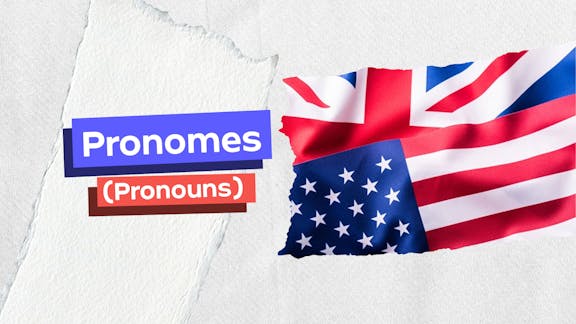In “For instance, experts predict a major
shortage of health care workers, especially home
care workers, who will be needed to help the aging
nation.” there is a/an
The World Might Be Running Low on
Americans
The world has been stricken by scarcity.
Our post-pandemic pantry has run bare of
gasoline, lumber, microchips, chicken wings,
ketchup packets, cat food, used cars and Chickfil-A sauce. Like the Great Toilet Paper Scare of
2020, though, many of these shortages are the
consequence of near-term, Covid-related
disruptions. Soon enough there will again be a
chicken wing in every pot and more than enough
condiments to go with it.
But there is one recently announced
potential shortage that should give Americans
great reason for concern. It is a shortfall that the
nation has rarely had to face, and nobody quite
knows how things will work when we begin to run
out.
I speak, of course, of all of us: The world
may be running low on Americans — most
crucially, tomorrow’s working-age, childbearing,
idea-generating, community-building young
Americans. Late last month, the Census Bureau
released the first results from its 2020 count, and
the numbers confirmed what demographers have
been warning of for years: The United States is
undergoing “demographic stagnation,”
transitioning from a relatively fast-growing
country of young people to a slow-growing, older
nation.
Many Americans might consider slow
growth a blessing. Your city could already be
packed to the gills, the roads clogged with traffic
and housing prices shooting through the roof.
Why do we need more folks? And, anyway, aren’t
we supposed to be conserving resources on a
planet whose climate is changing? Yet
demographic stagnation could bring its own high
costs, among them a steady reduction in
dynamism, productivity and a slowdown in
national and individual prosperity, even a
diminishment of global power.
And there is no real reason we have to
endure such a transition, not even an
environmental one. Even if your own city is
packed like tinned fish, the U.S. overall can
accommodate millions more people. Most of the
counties in the U.S. are losing working-age
adults; if these declines persist, local economies
will falter, tax bases will dry up, and local governments will struggle to maintain services.
Growth is not just an option but a necessity — it’s
not just that we can afford to have more people,
it may be that we can’t afford not to.
But how does a country get more people?
There are two ways: Make them, and invite them
in. Increasing the first is relatively difficult —
birthrates are declining across the world, and
while family-friendly policies may be beneficial for
many reasons, they seem to do little to get
people to have more babies. On the second
method, though, the United States enjoys a
significant advantage — people around the globe
have long been clamoring to live here,
notwithstanding our government’s recent hostility
to foreigners. This fact presents a relatively
simple policy solution to a vexing long-term
issue: America needs more people, and the world
has people to send us. All we have to do is let
more of them in.
For decades, the United States has enjoyed
a significant economic advantage over other
industrialized nations — our population was
growing faster, which suggested a more youthful
and more prosperous future. But in the last
decade, American fertility has gone down. At the
same time, there has been a slowdown in
immigration.
The Census Bureau’s latest numbers show
that these trends are catching up with us. As of
April 1, it reports that there were 331,449,281
residents in the United States, an increase of just
7.4 percent since 2010 — the second-smallest
decade-long growth rate ever recorded, only
slightly ahead of the 7.3 percent growth during
the Depression-struck 1930s.
The bureau projects that sometime next
decade — that is, in the 2030s — Americans over
65 will outnumber Americans younger than 18 for
the first time in our history. The nation will cross
the 400-million population mark sometime in the
late 2050s, but by then we’ll be quite long in the
tooth — about half of Americans will be over 45,
and one fifth will be older than 85.
The idea that more people will lead to
greater prosperity may sound counterintuitive —
wouldn’t more people just consume more of our
scarce resources? Human history generally
refutes this simple intuition. Because more people
usually make for more workers, more companies,
and most fundamentally, more new ideas for
pushing humanity forward, economic studies
suggest that population growth is often an
important catalyst of economic growth.
A declining global population might be
beneficial in some ways; fewer people would most
likely mean less carbon emission, for example —
though less than you might think, since leading
climate models already assume slowing
population growth over the coming century. And a
declining population could be catastrophic in other
ways. In a recent paper, Chad Jones, an
economist at Stanford, argues that a global
population decline could reduce the fundamental
innovativeness of humankind. The theory is simple: Without enough people, the font of new
ideas dries up, Jones argues; without new ideas,
progress could be imperiled.
There are more direct ways that slow
growth can hurt us. As a country’s population
grows heavy with retiring older people and light
with working younger people, you get a problem
of too many eaters and too few cooks. Programs
for seniors like Social Security and Medicare may
suffer as they become dependent on ever-fewer
working taxpayers for funding. Another problem
is the lack of people to do all the work. For
instance, experts predict a major shortage of
health care workers, especially home care
workers, who will be needed to help the aging
nation.
In a recent report, Ali Noorani, the chief
executive of the National Immigration Forum, an
immigration-advocacy group, and a co-author,
Danilo Zak, say that increasing legal immigration
by slightly more than a third each year would
keep America’s ratio of working young people to
retired old people stable over the next four
decades.
As an immigrant myself, I have to confess I
find much of the demographic argument in favor
of greater immigration quite a bit too anodyne.
Immigrants bring a lot more to the United States
than simply working-age bodies for toiling in
pursuit of greater economic growth. I also believe
that the United States’ founding idea of universal
equality will never be fully realized until we
recognize that people outside our borders are as
worthy of our ideals as those here through an
accident of birth.
The World Might Be Running Low on Americans
The world has been stricken by scarcity. Our post-pandemic pantry has run bare of gasoline, lumber, microchips, chicken wings, ketchup packets, cat food, used cars and Chickfil-A sauce. Like the Great Toilet Paper Scare of 2020, though, many of these shortages are the consequence of near-term, Covid-related disruptions. Soon enough there will again be a chicken wing in every pot and more than enough condiments to go with it.
But there is one recently announced potential shortage that should give Americans great reason for concern. It is a shortfall that the nation has rarely had to face, and nobody quite knows how things will work when we begin to run out.
I speak, of course, of all of us: The world may be running low on Americans — most crucially, tomorrow’s working-age, childbearing, idea-generating, community-building young Americans. Late last month, the Census Bureau released the first results from its 2020 count, and the numbers confirmed what demographers have been warning of for years: The United States is undergoing “demographic stagnation,” transitioning from a relatively fast-growing country of young people to a slow-growing, older nation.
Many Americans might consider slow growth a blessing. Your city could already be packed to the gills, the roads clogged with traffic and housing prices shooting through the roof. Why do we need more folks? And, anyway, aren’t we supposed to be conserving resources on a planet whose climate is changing? Yet demographic stagnation could bring its own high costs, among them a steady reduction in dynamism, productivity and a slowdown in national and individual prosperity, even a diminishment of global power.
And there is no real reason we have to endure such a transition, not even an environmental one. Even if your own city is packed like tinned fish, the U.S. overall can accommodate millions more people. Most of the counties in the U.S. are losing working-age adults; if these declines persist, local economies will falter, tax bases will dry up, and local governments will struggle to maintain services. Growth is not just an option but a necessity — it’s not just that we can afford to have more people, it may be that we can’t afford not to.
But how does a country get more people? There are two ways: Make them, and invite them in. Increasing the first is relatively difficult — birthrates are declining across the world, and while family-friendly policies may be beneficial for many reasons, they seem to do little to get people to have more babies. On the second method, though, the United States enjoys a significant advantage — people around the globe have long been clamoring to live here, notwithstanding our government’s recent hostility to foreigners. This fact presents a relatively simple policy solution to a vexing long-term issue: America needs more people, and the world has people to send us. All we have to do is let more of them in.
For decades, the United States has enjoyed a significant economic advantage over other industrialized nations — our population was growing faster, which suggested a more youthful and more prosperous future. But in the last decade, American fertility has gone down. At the same time, there has been a slowdown in immigration.
The Census Bureau’s latest numbers show that these trends are catching up with us. As of April 1, it reports that there were 331,449,281 residents in the United States, an increase of just 7.4 percent since 2010 — the second-smallest decade-long growth rate ever recorded, only slightly ahead of the 7.3 percent growth during the Depression-struck 1930s.
The bureau projects that sometime next decade — that is, in the 2030s — Americans over 65 will outnumber Americans younger than 18 for the first time in our history. The nation will cross the 400-million population mark sometime in the late 2050s, but by then we’ll be quite long in the tooth — about half of Americans will be over 45, and one fifth will be older than 85.
The idea that more people will lead to greater prosperity may sound counterintuitive — wouldn’t more people just consume more of our scarce resources? Human history generally refutes this simple intuition. Because more people usually make for more workers, more companies, and most fundamentally, more new ideas for pushing humanity forward, economic studies suggest that population growth is often an important catalyst of economic growth.
A declining global population might be beneficial in some ways; fewer people would most likely mean less carbon emission, for example — though less than you might think, since leading climate models already assume slowing population growth over the coming century. And a declining population could be catastrophic in other ways. In a recent paper, Chad Jones, an economist at Stanford, argues that a global population decline could reduce the fundamental innovativeness of humankind. The theory is simple: Without enough people, the font of new ideas dries up, Jones argues; without new ideas, progress could be imperiled.
There are more direct ways that slow growth can hurt us. As a country’s population grows heavy with retiring older people and light with working younger people, you get a problem of too many eaters and too few cooks. Programs for seniors like Social Security and Medicare may suffer as they become dependent on ever-fewer working taxpayers for funding. Another problem is the lack of people to do all the work. For instance, experts predict a major shortage of health care workers, especially home care workers, who will be needed to help the aging nation.
In a recent report, Ali Noorani, the chief executive of the National Immigration Forum, an immigration-advocacy group, and a co-author, Danilo Zak, say that increasing legal immigration by slightly more than a third each year would keep America’s ratio of working young people to retired old people stable over the next four decades.
As an immigrant myself, I have to confess I
find much of the demographic argument in favor
of greater immigration quite a bit too anodyne.
Immigrants bring a lot more to the United States
than simply working-age bodies for toiling in
pursuit of greater economic growth. I also believe
that the United States’ founding idea of universal
equality will never be fully realized until we
recognize that people outside our borders are as
worthy of our ideals as those here through an
accident of birth.
Gabarito comentado
Tema central da questão:
A questão explora a identificação de uma oração relativa (relative clause) na estrutura de uma frase em inglês. Esse é um conhecimento fundamental em análise sintática, especialmente útil para leitura e compreensão de textos em provas de Vestibular e concursos públicos.
Conceito-chave:
A oração relativa é uma oração subordinada que modifica um substantivo da oração principal, detalhando ou qualificando seu significado. Normalmente, introduzida por pronomes relativos: who, which, that, entre outros. Exemplo: The book that you gave me is interesting. Aqui, "that you gave me" é a relative clause que modifica book.
Justificativa da alternativa correta — A) relative clause:
Na frase do texto, "home care workers, who will be needed to help the aging nation", a parte sublinhada é uma oração relativa. Veja que "who" refere-se a home care workers e a oração acrescenta informação sobre esse grupo, sem alterar o sentido original da frase. Está conectada por um pronome relativo e detalha o substantivo antecedente.
Análise crítica das alternativas incorretas:
B) object noun clause: Uma oração substantiva objetiva age como objeto de um verbo; por exemplo, "I know that he is right". Na frase dada, não há verbo principal que precise de complemento direto trazido pela oração analisada.
C) adverb clause: Oração adverbial modifica o verbo principal, mostrando tempo, causa, condição, etc. Ex: "I will go if it rains". A oração destacada não está indicando circunstância para um verbo, mas acrescendo informação a um substantivo.
D) subject noun clause: Oração substantiva subjetiva exerce a função de sujeito na frase. Ex: "That he passed was surprising." No trecho da questão, a oração não desempenha esse papel; ela apenas modifica um substantivo já existente.
Estratégia para não errar:
Identifique o pronome relativo (who, which, that) e observe se a oração acrescenta informação sobre um substantivo logo antes dela. Se sim, trata-se de uma relative clause.
Portanto, a alternativa correta é: A) relative clause.
Gostou do comentário? Deixe sua avaliação aqui embaixo!






